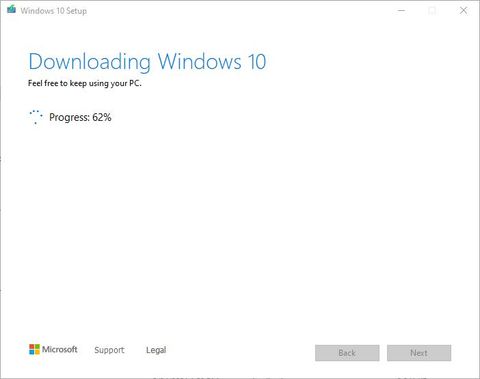

- #Make a bootable usb from iso microsoft how to#
- #Make a bootable usb from iso microsoft update#
- #Make a bootable usb from iso microsoft upgrade#

#Make a bootable usb from iso microsoft upgrade#
Here's everything you need to know before you repair, reinstall, or upgrade Windows 10, including details about activation and product keys. Before you get back to work, use this checklist to ensure that your privacy and security settings are correct and that you've cut annoyances to a bare minimum. You've just upgraded to the most recent version of Windows 10. Take advantage of the opportunity to create a recovery drive so you have a way to perform repairs if something ever goes wrong.Īfter Windows 10 upgrade, do these seven things immediately If your Windows 10 PC is operating perfectly right now, great. Questions about installing and activating Windows 10? Here's what you need to know before you dive in.
#Make a bootable usb from iso microsoft how to#
How to install, reinstall, upgrade and activate Windows 10 Need more details about the right way to do a clean Windows 10 install? See these previous articles: Label the drive (including the version number) and keep it in a safe place. Choose the option to overwrite all existing files.
Position the two File Explorer windows side by side and drag the full contents of the mounted drive to your USB flash drive. Open a second File Explorer window, locate the Windows 10 ISO file you downloaded, and double-click to mount it as a virtual drive. Open File Explorer and double-click the recovery drive you just created to open its contents in a window. For full details, see "Windows 10 tip: Create a recovery drive.") (The easiest way to find this tool is to type Create a recovery drive in the search box on the taskbar, then click the shortcut from the search results. Plug the USB flash drive into your PC and use the Recovery Media Creator tool create Windows 10 recovery drive. This process will delete all data on the USB drive, so back up any important files before proceeding. In addition to the ISO file, you also need a USB flash drive at least 8 GB in size. From that same File Explorer window, you can also create bootable Windows 10 installation media on a USB flash drive. Ready for Windows 10 April 2018 Update? How to take controlĪfter the download is complete, you can double-click the ISO file to mount it as a virtual DVD drive and run Setup directly from the mounted drive. But I recommend a slightly different approach: Use the option to download the Windows 10 installer as an ISO file, and then use that file to make bootable installation media. You can use the Media Creation Tool to create a bootable USB flash drive, as I describe in my installation FAQ. You can use that drive to repair a damaged installation or to reinstall Windows on a new PC. #Make a bootable usb from iso microsoft update#
Every time Microsoft releases a new feature update for Windows 10, you should build a new recovery drive containing the setup files for that update.






 0 kommentar(er)
0 kommentar(er)
